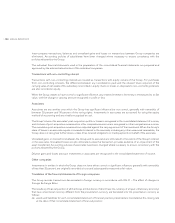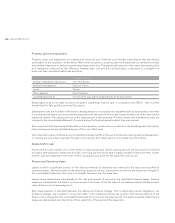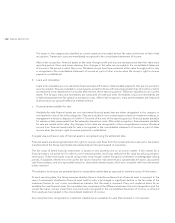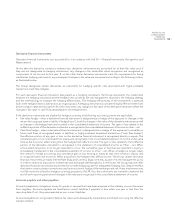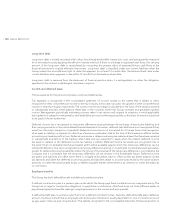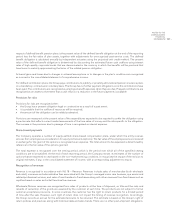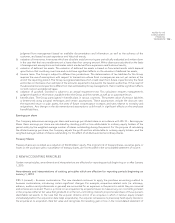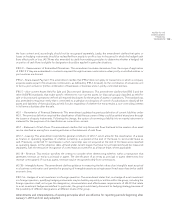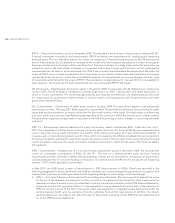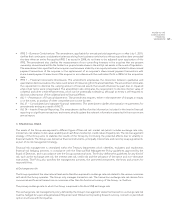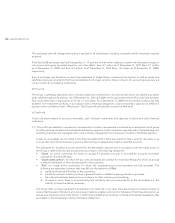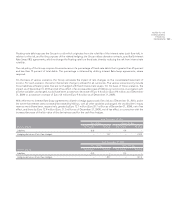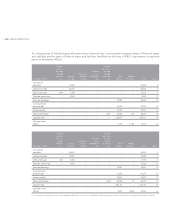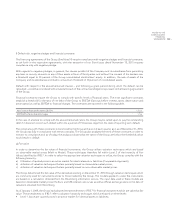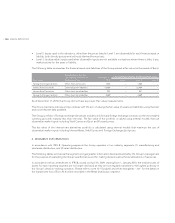LensCrafters 2010 Annual Report Download - page 136
Download and view the complete annual report
Please find page 136 of the 2010 LensCrafters annual report below. You can navigate through the pages in the report by either clicking on the pages listed below, or by using the keyword search tool below to find specific information within the annual report.ANNUAL REPORT 2010> 134 |
income. The consideration transferred is measured at fair value while any contingent consideration i.e. the obligation of
the acquirer to transfer additional assets or equity interests to the former owners of an acquiree if a specified future event
occurs or specific conditions are met are recognized at their acquisition date fair value and classified as a financial liability.
Changes in fair value of contingent consideration are generally recorded in the consolidated statement of income. The
application of IFRS 3 (revised) did not have a significant impact on the Company’s financial statements in the current period,
but it is expected to have an effect in future periods depending on the nature, terms and size of future acquisitions.
IAS 27 (revised) – Consolidated and separate financial statements: IAS 27 (revised) requires the effects of all transactions
with non–controlling interests to be recorded in equity if there is no change in control and these transactions will no longer
result in goodwill or gains and losses. The standard also specifies the accounting treatment when control is lost. Any
remaining interest in the entity is remeasured to fair value, and a gain or loss is recognized in profit or loss. IAS 27 (revised)
did not have a significant impact on the Company’s financial statements in the current period.
Amendment to IFRS 2 – Share–based payment:group cash–settled share–based payment transactions: The amendment
clarifies that the company receiving goods or services as part of share–based payment plans should recognize such goods
or services regardless of which group or company settles the transaction and regardless of whether the transaction is
settled in cash or shares. The amendment also specifies that a company should measure goods or services received as
part of a transaction settled in cash or shares from its perspective, which might not coincide with that of the group or with
the relevant amount recognized in the consolidated financial statements. The amendment did not have any impact on the
Company’s consolidated financial statements in the current period.
IFRS 8 – Operating Segments: This amendment requires that an entity disclose the total amount of assets for each
reporting segment only if such amount is regularly reported to the highest authority in its decision–making process. This
disclosure was previously required even if such condition was not met. Based on the amendment, the Group no longer
discloses the total amount of assets for each reporting segment.
IAS 36 – Impairment of Assets: This amendment requires that each unit or group of units to which goodwill is allocated for
impairment testing purposes should not be larger than an operating segment determined in accordance with paragraph
5 of IFRS 8, before any combination permitted by the same standard. The amendment had no impact on the Company’s
consolidated financial statements in the current period.
Amendments and interpretations of existing principles which are effective for reporting periods beginning on
January 1, 2010 but not currently relevant for the Group (although they may affect the accounting for future
transactions and events)
IFRIC 17 – Distributions of Non–cash Assets to Owners: The interpretation clarifies that a dividend payable should be
recognized when the dividend is properly authorized and that an entity should measure the dividend payable at the fair
value of the net assets to be distributed. Finally, an entity should recognize the difference between the dividend paid and
the carrying amount of the net assets used for payment in the consolidated statement of income.
IFRIC 18 – Transfers of Assets from Customers: The interpretation clarifies the accounting treatment to be followed for
agreements in which an entity receives from a customer an item of property, plant and equipment that the entity must
then use either to connect the customer to a network or to provide the customer with ongoing access to a supply of goods
or services (such as a supply of electricity, gas or water).
IAS 39 – Financial Instruments: Recognition and Measurement: This amendment restricts the scope exemption in paragraph
2(g) of IAS 39 to forward contracts between an acquirer and a vendor in a business combination to buy or sell an acquiree
at a future date. The term of the forward contract should not exceed the period of time necessary to obtain all the
authorizations to complete the transaction. The amendment clarifies that the exemption in paragraph 2(g) of IAS 39 does
not apply to options which, if exercised, would result in the acquisition of control of an entity. The amendment also clarifies
that loan repayment penalties, which offset the lender’s loss of additional interest, should be treated in close relation to


